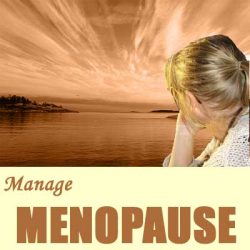Hormone replacement therapy (HRT): HRT replaces the hormones that a woman’s body no longer makes. The most important hormone used in reducing menopausal symptoms is estrogen, but taking estrogen alone can increase a woman’s risk of developing endometrial cancer (cancer of the lining of the uterus). This isn’t a problem in women who have had a hysterectomy (surgical removal of the uterus), but in women who still have a uterus estrogen is usually combined with another hormone, progestin, to reduce the risk of endometrial cancer. But even combination HRT can have serious side effects, and the decision about whether to go on this treatment is one each woman must make for herself after discussing it with her doctor.
Bisphosphonates: These drugs are used to help prevent and treat osteoporosis that may result from reduced hormone levels. While they are not quite as effective as estrogen, they are not hormonal and, therefore, don’t carry the same risks as HRT. However, it is important to remember that every drug carries some risk.
Menopause Treatment Options
Selective estrogen receptor modulators (SERMs):
These drugs have some of the benefits of estrogen, including improving bone strength, without some of the risk that estrogen has. However, SERMs tend to cause more hot flashes and may increase the risk of gallstones or blood clots.
Complementary and alternative therapies (CAM):

Menopause Treatment Options
Some women going through peri menopause may find relief from their symptoms from CAM therapies, including dietary and herbal supplements, acupuncture, chiropractic treatments, massage therapy, biofeedback, homeopathy, and naturopathy. It is important to remember that not all complementary and alternative therapies have been studied scientifically, and some may have negative effects on other conditions you may have. Before you decide to try one of these therapies, discuss it with your doctor or pharmacist to make sure that what you are planning is safe for you.
Helping Yourself
In addition to taking medication, there are ways you can help reduce your symptoms.
To ease hot flashes:
Dress in layers so you can remove some clothing when you begin to feel warm.
Avoid foods and beverages known to trigger hot flashes, such as alcohol, caffeine, spicy food, and sugar.
Practice stress management techniques.
Exercise to improve your circulation.
To reduce vaginal dryness
Ask your pharmacist to recommend a vaginal lubricant.
If over-the-counter products don’t work, talk to your doctor about the prescription products that are available.
To reduce the risk of osteoporosis
Menopause Treatment Options has to also be aimed at osteoporosis because of the reasons named above. They really are linked and here are a few things that you can look at to help.
- Get enough calcium and vitamin D. If you aren’t sure you are getting enough of these nutrients from the foods you eat, ask your pharmacist about supplements.
- Exercise regularly; -bearing exercises (such as walking) are best for strengthening bones.
- Ask your doctor if you should have a bone density test.
- To reduce the risk of heart disease:
- Get your blood pressure and cholesterol levels checked regularly.
- Eat a nutritious, heart -healthy diet that is low in saturated and trans fats and high in fibre.
- Be active. Check with your doctor before beginning any new exercise program to make sure the activity you have chosen is appropriate for your overall physical condition.
If you have any questions about Menopause Treatment Options or ways to lessen the symptoms and reduce your risk of developing heart disease or osteoporosis, ask your doctor or pharmacist.
The post Menopause Treatment Options appeared first on Fitness Tips for Life.
https://ift.tt/2PfQPJA
No comments:
Post a Comment